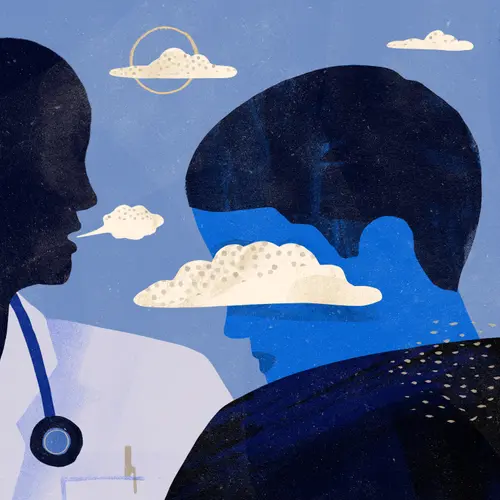Harm reduction is a public health approach that aims to help people with substance use disorders or other high-risk habits in a nonjudgmental way.
Rather than condone or condemn their behavior, the idea is to offer them education, preventive care, and other types of support meant to limit the physical and social consequences that could stem from their choices.
Harm reduction services can help people living with a range of health issues, from drug use problems to risky sexual habits. Just a few examples of the resources it can provide in some states are:
- Programs to reduce infections from drug injections and to help people find treatment
- Prescription medication to reverse opioid overdoses
- Designated driver campaigns to lower deaths tied to drunken driving
- Free condoms to lower the risk of STDs and accidental pregnancies
What Are Some Beliefs of Harm Reduction?
Rather than attempt to stamp out all drug use or other high-risk habits, harm reduction accepts that these things will always exist and aims to improve the quality of life for affected people and communities instead.
So, it’s an approach that doesn’t require someone with a substance use disorder to practice abstinence or stop using. Instead, the idea is to help the person use more safely and lower their chances of getting hospitalized or dying.
As part of its nonjudgmental philosophy, policymakers, and health workers who support harm reduction also consider the root causes that can make someone more vulnerable to drug problems, like:
- Poverty
- Racism
- Social isolation
- Past trauma
- Sex-based discrimination
How Might Harm Reduction Help Against the Opioid Crisis?
For years, the U.S. has seen wave after wave of overdose deaths from prescription and illegal versions of powerful drugs called opioids. During the COVID-19 pandemic, overdose deaths from drugs, including certain types of opioids, only went up.
Back in 2018, about 2 million Americans had an opioid use disorder. This is a treatable medical condition that happens when opioid use limits your ability to function or causes distress. And the stigma of it keeps some people from reaching out to doctors or loved ones to get help they need.
Some experts say harm reduction can help against opioid use disorder whether the person with the disorder is in treatment or not.
If you or someone you know is addicted to opioids, you may be able to get care from a doctor who provides harm reduction techniques like these:
Overdose medicine. Some doctors prescribe a medicine that quickly reverses an opioid overdose called naloxone. Your doctor might also be able to point you to a local harm reduction service group that offers naloxone kits and training.
Research links communities where naloxone is distributed to fewer opioid overdose deaths. This suggests that lots of opioid overdoses have been reversed when people with no medical background used a naloxone shot or nasal spray.
Overdose education. If you or someone you know is actively abusing opioids, the doctor might advise you on how to lower the chances of an overdose or get help in case of one. They may recommend things like:
- Don’t use opioids if you’re alone -- especially if you’re injecting the drug.
- If you have prescription naloxone, tell people you’re close with where it is and how to use it. Let them know they should also call 911 after they give you naloxone.
- Don’t mix opioids with other things that could sedate you, like alcohol or benzodiazepine drugs.
- If you’re using a new batch of opioids, start by taking a very small amount of it.
- If you’ve cut back on opioid use, understand that your tolerance may be lower.
Less-risky injections. If you or a loved one injects opioids, an overdose isn’t the only health hazard. Among the other risks, a used needle could infect you with bacteria or viruses, including HIV (the virus that causes AIDS).
A doctor who practices harm reduction might recommend safer injection methods to lower these risks. Strategies like these may reduce deaths and aren’t linked to increased drug use:
- Don’t inject the same exact body part each time. Switch between injection sites.
- Clean your skin before injecting.
- Never reuse syringes or needles.
You could also ask the doctor if they know of an authorized syringe service program in your area. These community-based programs can offer a variety of resources, like:
- Sterile syringes and injection equipment.
- Help getting treatment for substance use disorders.
- Vaccination, tests, and help getting treatment for infectious diseases.
Some harm reduction services use fentanyl test strips. Fentanyl is a lab-made opioid that’s up to 100 times stronger than morphine, and people who sell illegal versions of it sometimes mix it with other drugs, like heroin, cocaine, methamphetamine, and MDMA. So you may not even realize you’re taking it.
Fentanyl test strips can spot fentanyl in unregulated drugs, including shots, powders, and pills. Knowing whether this powerful additive is in a drug could help someone avoid using it, lowering the chances for an overdose.
One type of harm reduction service that’s not available in the U.S. is called a “supervised injection facility.” That’s a legally sanctioned center that lets people inject their own drugs while trained staff watch over them -- and it’s linked to positive health outcomes in other countries.

